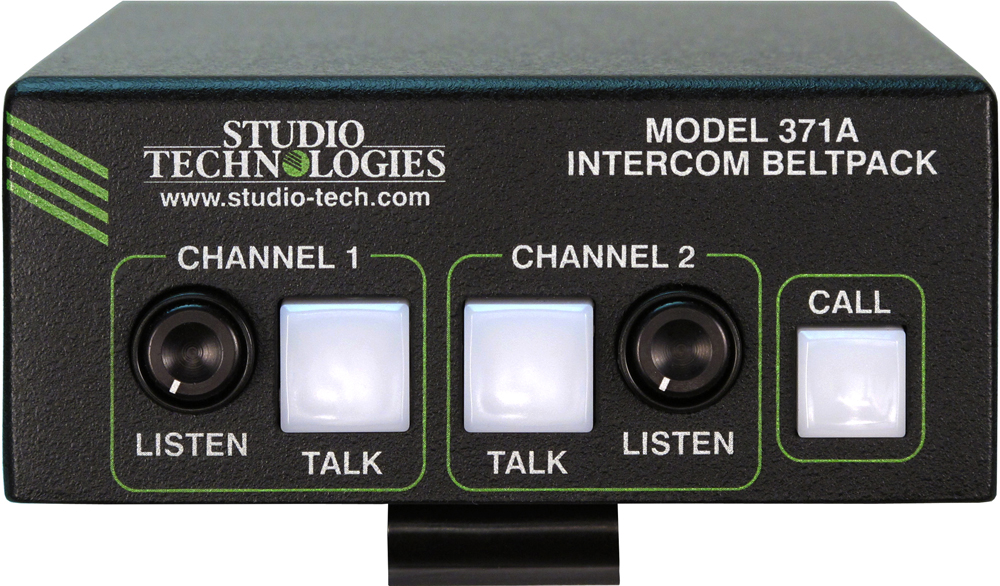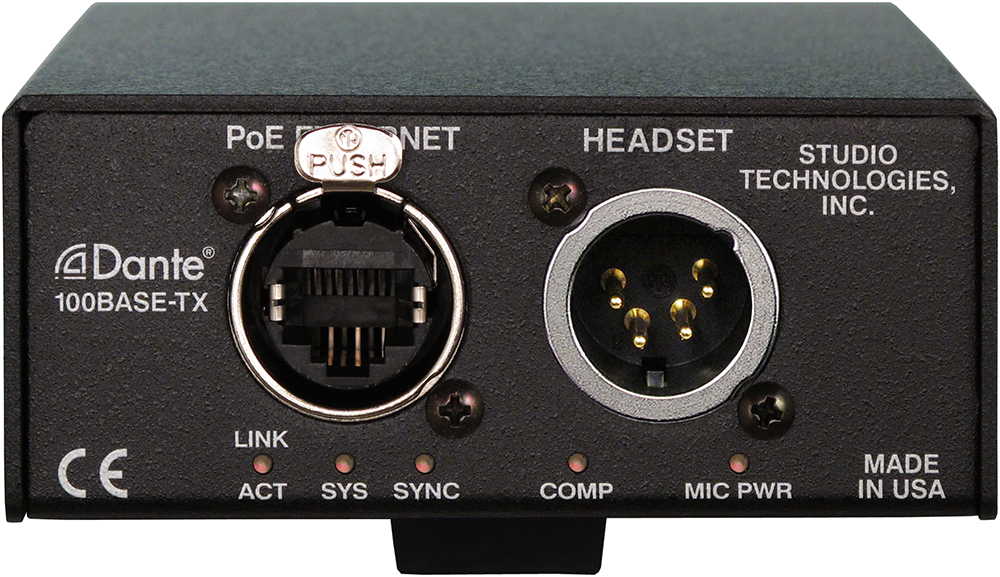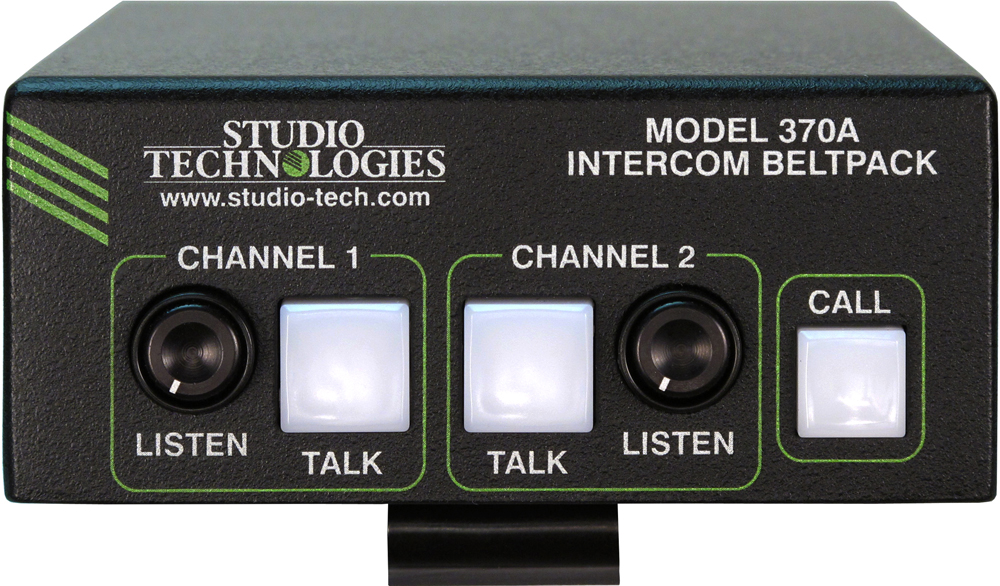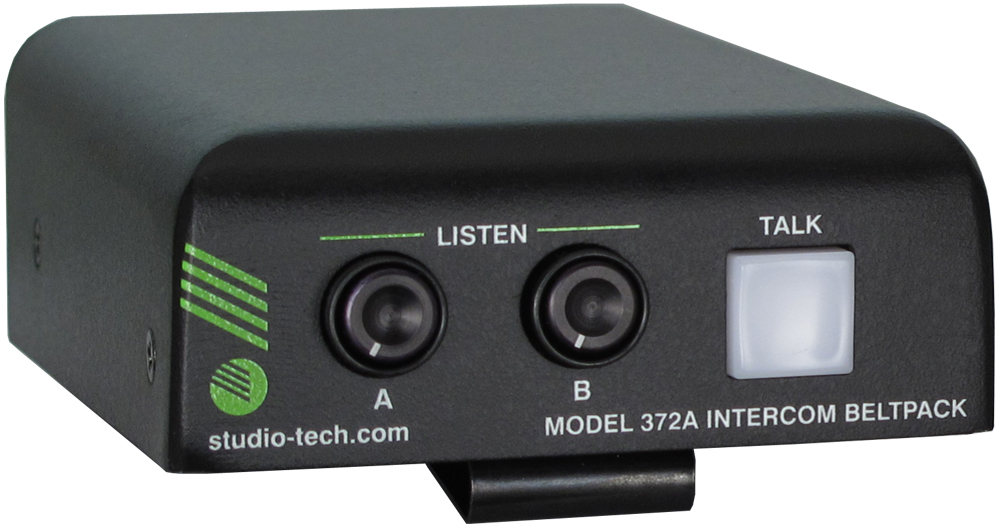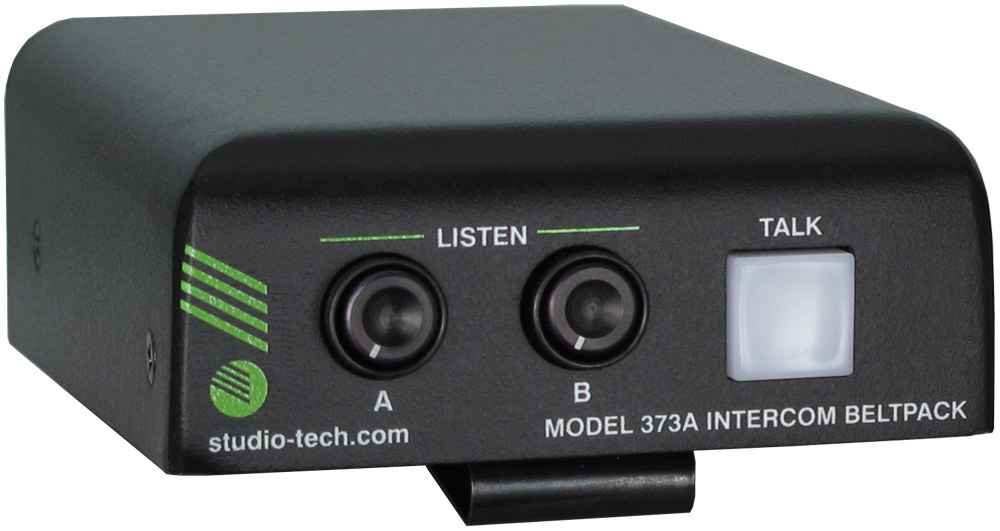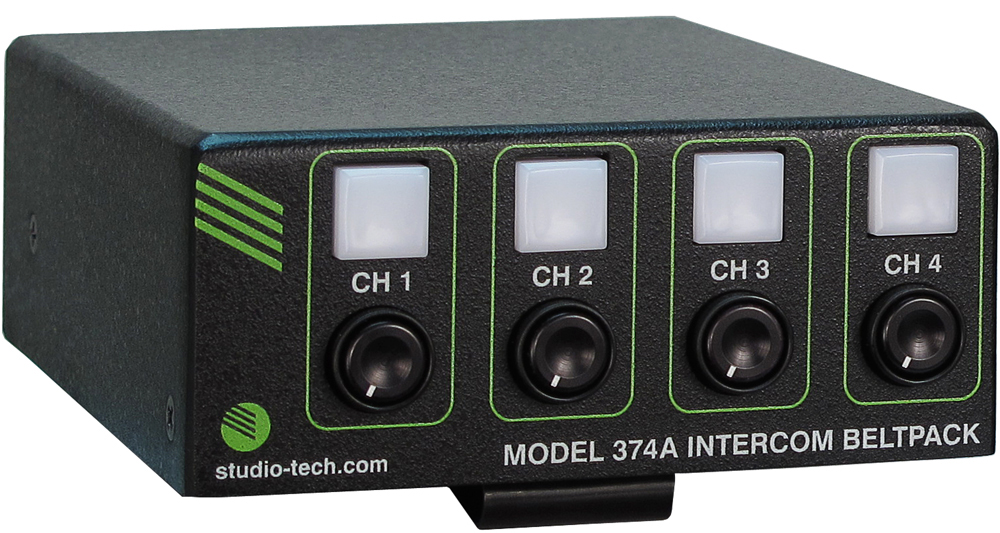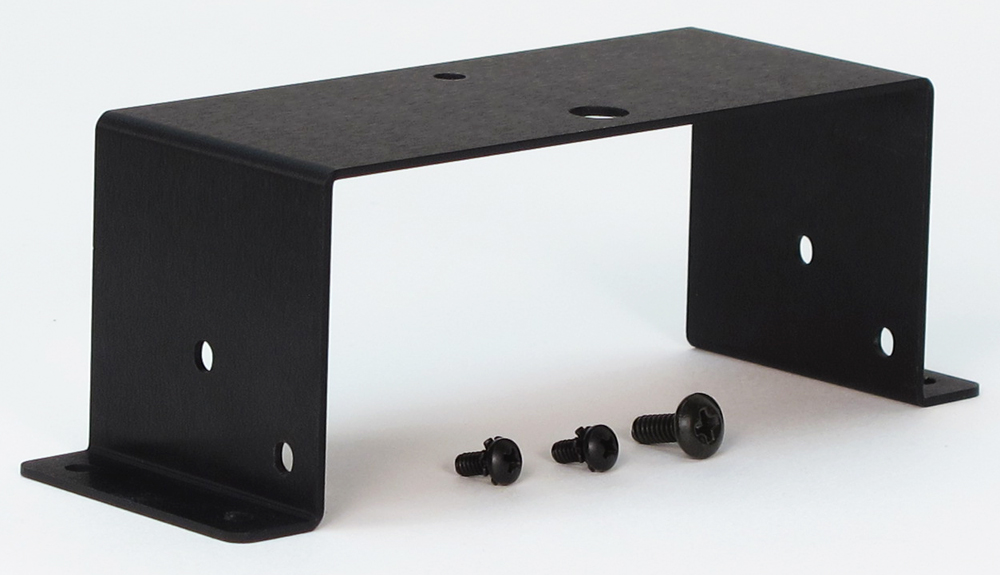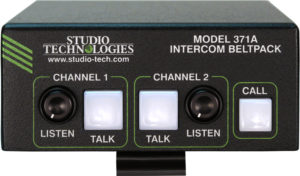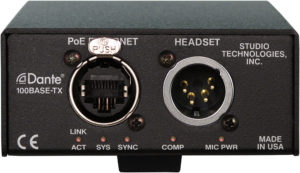The Model 371A includes a range of new capabilities, along with the advanced performance and flexibility that Dante® audio-over-Ethernet provides. Over a standard IP network, multiple Model 371A units can be used in party-line (PL) intercom applications with help from an external Dante-enabled audio matrix such as the Studio Technologies Model 5422 Dante Intercom Audio Engine. Alternately, units can be used "point-to-point" or interfaced with Dante-compatible matrix intercom systems.
Only a single Power-over-Ethernet (PoE) connection is required for operation. Key user features can be easily configured using the STcontroller software application. Configurable parameters include electret microphone powering, microphone preamplifier gain, sidetone level, and talk button operation. User features include microphone dynamic range control, call function, and remote mic kill ("talk off"). The wide range of capabilities, along with the excellent audio quality provided by the digital audio signal path, offers a unique and powerful user experience.
Set up and configuration of the Model 371A is simple. An etherCON® RJ45 receptacle is used to interconnect with a standard twisted-pair Ethernet port associated with a local-area network (LAN). This connection provides both power and bidirectional digital audio. A broadcast or intercom-style headset with a dynamic or electret (low-voltage DC-powered) microphone interfaces with unit using a 4-pin XLR connector. The Model 371A's enclosure is made from an aluminum alloy which offers both light weight and ruggedness. A stainless steel "belt clip," located on the back of the unit, allows direct attachment to a user's clothing.
The audio quality of the Model 371A's audio channels is excellent, with low distortion, low noise, and high headroom. Careful circuit design and rugged components ensure long, reliable operation. A wide range of applications can be supported, including theater facilities, over-the-air and streaming broadcasting, corporate and government AV installations, aerospace command and control, and post-production facilities.
Dante Audio-over-Ethernet
Audio data is sent to and received from the Model 371A using the Dante audio-over-Ethernet media networking technology. As a Dante-compliant device, the Model 371A's two audio output (Dante transmitter) and two audio input (Dante receiver) channels can be interconnected (routed) with other devices using the Dante Controller software application. The Dante transmitter and receiver channels are limited to supporting four Dante flows, two in each direction. The digital audio's bit depth is up to 24 with a sampling rate of 48 kHz. The Model 371A is AES67 compatible and compliant with the Dante Domain Manager™ software application.
Two bi-color LEDs provide an indication of the Dante connection status. The Dante Controller's Identify command takes on a unique role with the Model 371A. Not only will it cause the talk and call button LEDs to light in a unique highly visible sequence, it can also be configured to turn off any active talk channels.
Audio Quality
The Model 371A's completely "pro" performance is counter to the less-than-stellar reputation of typical party-line (PL) intercom audio. A low-noise, wide dynamic-range microphone preamplifier and associated voltage-controlled-amplifier (VCA) dynamics controller (compressor) ensures that microphone audio quality is preserved while minimizing the chance of signal overload. DC power to support electret microphones can be enabled if necessary. The output of the microphone preamp and compressor is routed to an analog-to-digital converter (ADC) section that supports a sampling rate of 48 kHz with a bit depth of up to 24. The audio signal, now in the digital domain, travels through the processor and on to the Dante interface section where it is packetized and prepared for transport over Ethernet.
Audio input signals arrive via two Dante receiver channels. The supported sampling rate is 48 kHz with a bit depth of up to 24. The audio signals pass into the Model 371A's processor where channel routing, headphone level control, and sidetone creation are performed within the digital domain. Two push-in/push-out ("pop out") rotary controls make it easy to set and maintain the desired headphone output level. The audio signal destined for the headphone output is sent to a high-performance digital-to-analog converter and then on to a robust driver circuit. A high signal level can be provided to a variety of headsets, headphones, and earpieces.
Call Function
A call function allows Model 371A users to send and receive channel-specific visual alert signals. Pressing the call pushbutton on the top of the unit is all that's required to signal other users that attention is requested. Using 20 kHz tones, the call signals are sent within the audio channels ("in band") allowing interoperability between multiple Model 371A units as well as being compatible with legacy party-line intercom systems. The call function can be useful to indicate to users that they are needed "on headset" or should be actively listening to an intercom channel. The call function can also be used to provide real-time cues to production personnel during the running of live events.
Configuration Flexibility
A highlight of the Model 31A is its ability to be easily configured to meet the needs of specific users and applications. All configuration choices are made using the STcontroller software application that communicates with the Model 371A by way of an Ethernet network connection. Configurable parameters include microphone power and preamplifier gain, sidetone audio operation, and talk button operation.
The microphone input can be selected for compatibility with dynamic or elected (DC-powered) microphones. The gain of the microphone preamplifier can be selected from among four choices. These allow compatibility with the variety of microphones that are part of broadcast and intercom headsets.
A unique Model 371A feature is the ability to individually configure the way in which the two talk pushbutton switches function; four choices are available. For standard intercom beltpack operation it's typical to select Push to Talk, Latching, or Push to Talk/Tap to Latch. For situations where only monitoring of an intercom channel is desired a Disabled mode is available.
Ethernet Data and PoE
The Model 371A connects to an Ethernet data network using a standard 100 Mb/s twisted-pair Ethernet interface. The physical interconnection is made by way of a Neutrik® etherCON RJ45 receptacle. While compatible with standard RJ45 plugs, etherCON allows a ruggedized and locking interconnection for harsh or high-reliability environments. An LED displays the status of the network connection.
The Model 371A's operating power is provided by way of the Ethernet interface using the 802.3af Power-over-Ethernet (PoE) standard. This allows fast and efficient interconnection with the associated data network. To support PoE power management, the Model 371A's PoE interface reports to the power sourcing equipment (PSE) that it's a class 1 (very low power) device.
Future Capabilities and Firmware Updating
The Model 371A was designed such that its capabilities and performance can be enhanced in the future. A USB connector, located on the unit's main circuit board (underneath the unit's cover), allows the application firmware (embedded software) to be updated using a USB flash drive.
The Model 371A uses Audinate's Ultimo™ integrated circuit to implement the Dante interface. The firmware in this integrated circuit can be updated via the Ethernet connection, helping to ensure that its capabilities remain up to date.

